A Poverty Row evening
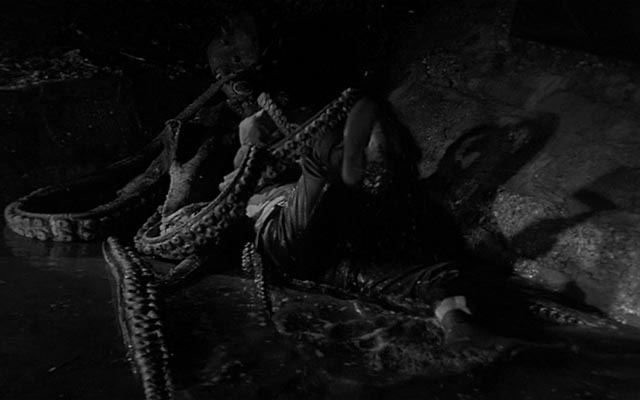
Technically, the term Poverty Row belongs to a ragged collection of small independent studios (Monogram, Republic, PRC and so on) working on the fringes of Hollywood roughly from the early ’30s to the mid-’50s. Their business model was “quick and cheap”, their output largely limited to short features in familiar genres – westerns, crime movies, comedies and, for many years, serials – which were easily exploitable. While most of what came out of these studios was instantly forgettable, they did provide a safe haven at times for talented people who had a hard time fitting in at the majors – most notably, of course, Edgar G. Ulmer, who managed to work minor miracles on non-existent budgets and impossibly short shooting schedules.
These studios, like the majors, began to change and disappear in the ’50s as the industry went through the upheavals of court-ordered divestment and independent producers emerged. But the kinds of movies they were known for continued to appear, although increasingly without the foundation of a studio to prop them up. Theatres still needed product to fill second-run double bills and there were more than enough people ready and willing to provide. In the ’60s, a newer variant of poverty row emerged; with cheaper, more portable equipment, it became easier for virtually anyone to make a movie for very little money – this was the origin of what we eventually came to know as “independent cinema”, but as often as not in those early days, the preferred route was through those familiar genres. It was possible for a filmmaker like Curtis Harrington, coming from a background in art and experimental filmmaking, to launch a career in features with a moody, poetic fantasy-horror film like Night Tide (1961). Or for a group of friends from an industrial filmmaking company in Pittsburgh to spend their weekends cooking up a grim zombie tale which would become one of the most influential horror movies ever made.
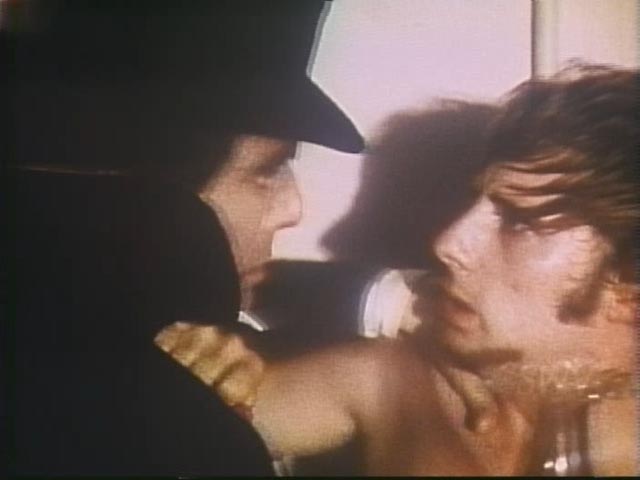
These movies from the fringes both reflected and questioned accepted standards which had been set by the commercial power of the studios. Some filmmakers emulated those standards, while others happily violated them. This is true in terms of both the chosen content and the technical execution. Someone like Herschell Gordon Lewis could launch an assault on standards of good taste, violating the strictures of decency with offensive imagery to a degree which made interested audiences excuse his technical incompetence. As long as he showed them something no mainstream studio would dare, they didn’t care how tediously crude the movie actually was.
I guess the point I’m making is that in these fringe areas, just as in the big studios of classical Hollywood, there was room for both hacks and artists, for mere technical competence and artistic expression. But the financial and technical limitations of working in these areas can tend to hide such nuances because the hegemony of mainstream industry polish holds such power over the audience; technical shortfalls can blind viewers to other qualities in the work of fringe filmmakers.
Which brings me to my recent “poverty row evening” with my friend Steve.
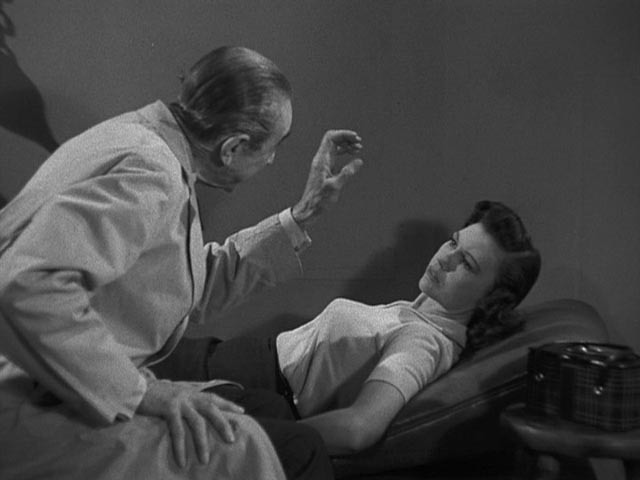
This was triggered by Steve alerting me to a collection of short stories by Edward D. Wood Jr available on Amazon. Blood Splatters Quickly contains 30-plus stories Ed banged out between 1968 and 1974 to fill gaps in issues of skin mags published by Bernie Bloom. Of course, I had to buy the Kindle edition. I’d read a couple of Ed’s novels before and they were as enjoyably deranged as his movies – sometime in the mid-’90s I found an original copy of his 1965 paperback Killer in Drag at a Winnipeg used bookstore whose owner didn’t realize what he had; it only cost me two bucks (a quick Internet search comes up with only copies of the 1999 reprint, so I have no idea what it might be worth now). Then in 1999 I picked up a copy of the reprint of the 1967 follow-up Death of a Transvestite. These novels recast Glen or Glenda? as the story on a transvestite hitman, in the latter recounting his story from death row in exchange for being able to face execution in drag.
With my interest in Ed reinvigorated, I tracked down a copy of Image Entertainment’s Ed Wood Box DVD set for a reasonable price on eBay (I didn’t buy it back when it was released in 2004 because I still had most of Ed’s movies on VHS – but that collection has long-since disappeared). When it arrived, I invited Steve over for a pizza-and-movies evening, and since he had never seen anything by Andy Milligan and I had never got around to watching the Milligan DVDs I bought after writing my review of the BFI Blu-ray of Nightbirds and The Body Beneath, I suggested we sample both directors. In the end, after eating too much pizza and an overly rich chocolate dessert, we both burned out earlier than expected, so we only watched two movies – Ed’s Bride of the Monster (1955) and Andy’s The Man With Two Heads (1972).
Ed Wood
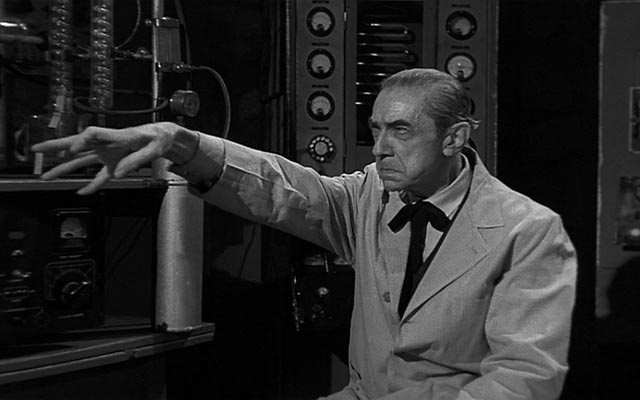
Bride of the Monster was Ed’s third feature and it looks surprisingly good on the DVD, with a crisp transfer from a print in very good condition. The weakest thing about it – on a technical level – is a muddy soundtrack which gives much of the dialogue a muffled quality. Co-written by Ed with Alex Gordon (brother of noted genre producer Richard Gordon), Bride is an attempt to emulate ’50s sci-fi/horror movies – that is, it’s a more deliberate attempt at a commercial project than Ed’s unabashedly personal debut feature, Glen or Glenda? (1953), and the first movie of the loose trilogy on which most of his fame (or notoriety) rests – Bride, Plan 9 From Outer Space (1959) and Night of the Ghouls (also 1959). The genre trappings afford more entertaining possibilities than the noirish elements of Jail Bait (1954) and The Sinister Urge (1960), the latter presaging Ed’s eventual descent into porn after a decade-long hiatus.
I’ve said it before, and it bears repeating, that Ed’s reputation as “the world’s worst director”, originally promulgated by the Medved brothers in their execrable Golden Turkey Awards book (which in turn was the original inspiration for the equally smug and condescending Mystery Science Theater 3000), doesn’t hold up. His movies, both inadvertently and advertently, are entertaining despite their various technical and creative shortcomings. If they were truly the worst movies ever made, they would simply be unwatchable. You may get most of your enjoyment from them by laughing at Ed’s (sometimes debatable) incompetence, but at his best his enthusiasm for movie-making comes through. (This was what Tim Burton mocked affectionately in his comic bio-pic Ed Wood [1994], while avoiding the real Ed’s darker side.)
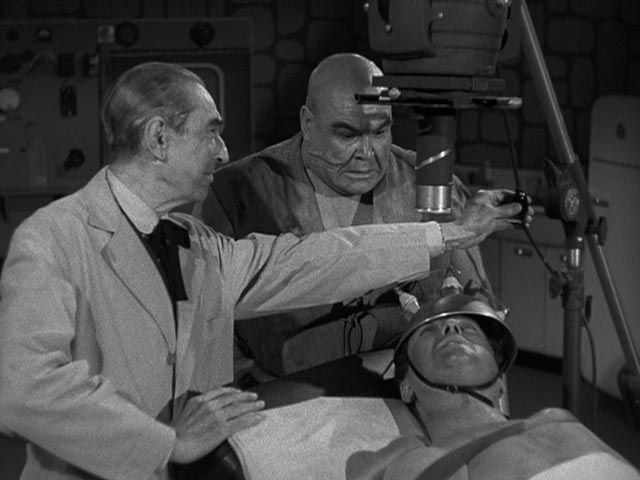
Seen in nearly pristine condition on Image’s DVD, what is most surprising is that Bride of the Monster isn’t exactly shoddy, as its reputation suggests. Yes, the sets are a bit shaky, but the photography by William C. Thompson (with an assist from Ted Allan), is well-lit and at times atmospheric. The acting has Ed’s usual rushed quality, most of the cast relying on a limited repertoire of gestures and vocal tricks; but a number of them are as good as you’d find in many low-budget B-movies of the period. And a couple stand out. Tor Johnson may not have possessed much (if any) acting talent, but he’s a definite screen presence and his lumbering turn as Lobo, the mute animal brute henchman of mad scientist Dr. Eric Vornoff, is endearingly strange.
But the real heart of the film is Bela Lugosi as Vornoff. The fading star invests his character with genuine pathos (again, well-captured by Burton), a visionary scientist driven from his home country by fools who could see no value in his attempt to create an invincible army of atomic supermen, now hiding out in the middle of an American swamp. Lack of budget (and a failure of imagination) short-change Vornoff, however. Lobo is not a particularly convincing representative of the planned super race, and the only other evidence for the value of Vornoff’s plans is that notorious killer octopus. This inert rubber monster with which no less than three performers have to fight to the death – throwing themselves into the tangle of its tentacles and writhing around while it just lies there – provides the movie’s biggest laughs.
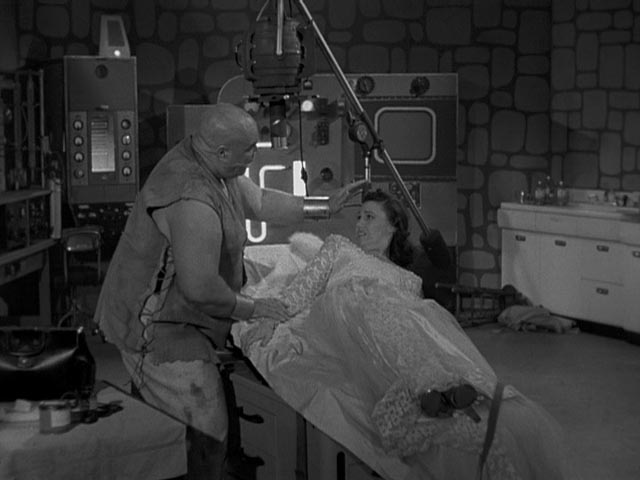
But if Ed had had the means to make a more convincing monster, Bride would probably be accepted as simply another viable B-movie of the period. The script is coherent, Ed stages many scenes competently, and he even throws in odd details which indicate that he was having fun himself – like police Captain Robbins’ pet parakeet that sits on his shoulder most of the time, something which would have taken up a bit of the limited shooting time even though it’s unnecessary in terms of plot, rather adding a minor note of surrealism (reminding us of the full-blown surrealism which runs through Glen or Glenda?). Here we see that Ed wasn’t simply desperately trying to emulate standard commercial movies, but was aware enough to add an odd, diverting personal note to the formula.
This, and the space Ed provides for Lugosi to give what is at times a genuinely emotional performance within the script’s limitations, suggests that Ed Wood should be given a bit more credit than he generally receives. He was no misunderstood genius, and his movies are not slyly disguised works of subversive art, but in the handful of features he made in the ’50s he is revealed as a more quirky and interesting filmmaker than dull but competent directors like Edward Bernds or Edward L. Cahn.
Andy Milligan
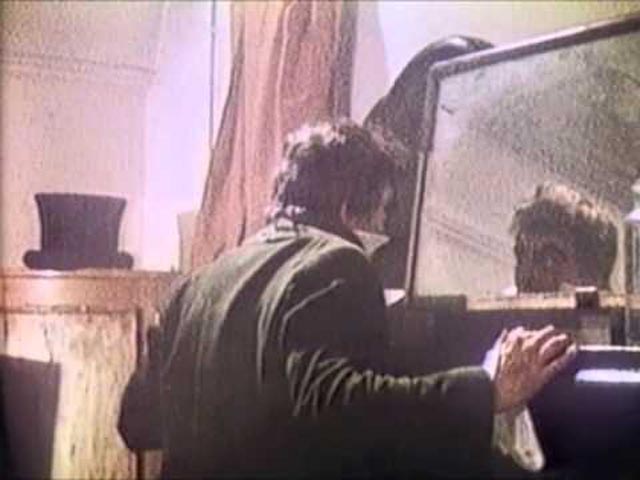
Andy Milligan was a very different animal, even though he too took the horror genre as his starting point. Unlike Ed Wood, Milligan was far less concerned with emulating the recognizable forms of commercial filmmaking. Coming from a background in underground theatre, and driven by his own personal demons, Milligan was more authentically an “auteur” than Wood. His movies express a particular (pretty unwholesome) worldview rooted in his own background as a gay man whose identity was in every way in opposition to his upbringing as the son of a career soldier and a neurotic, alcoholic mother. Milligan’s work is rife with a sour ambience of sexual bitterness. If homosexuality is a subtext in much of his work (and overt in Vapors [1965], his first, experimental short), it is most visible as a discomfort with female sexuality which at times slips easily into outright misogyny.
In this, unlike Ed Wood, Milligan does tend to subvert genre conventions. Much of the contempt heaped on Andy (look at the low ratings he garners on IMDb) arises from his refusal to adhere to “proper standards of filmmaking”. (It’s interesting to note on IMDb the number of times commenters express surprise that a particular movie is “pretty good” for Milligan, a sentiment which repeatedly takes as its base the received idea that if it’s by Milligan it must be awful, no matter how many times that idea is contradicted by the actual experience of watching one of his movies.)
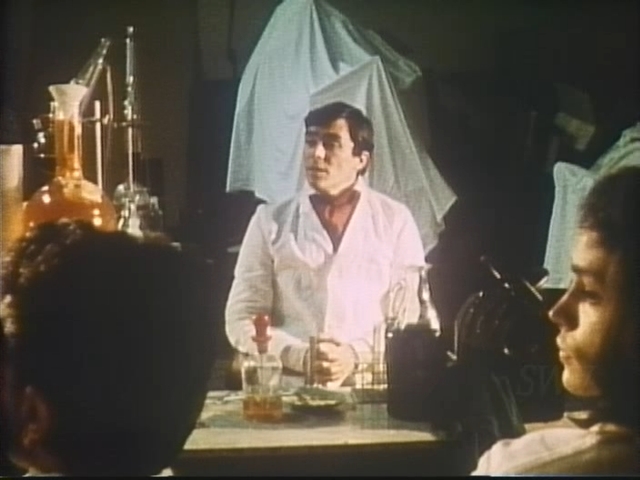
So, what is most distinctive about Andy Milligan’s work? With his roots in theatre, his scripts tend to be overly stuffed with dialogue, but this is not like Ed Wood’s awkward attempts to make his characters sound as if they’re in a regular movie. In Milligan’s work, the characters actually talk about stuff; they express ideas (often at great length) in quite literate dialogue. And despite the technical and budgetary limitations, this dialogue is often conveyed through interesting and idiosyncratic performances by casts with actual acting talent.
And all of this is framed within Milligan’s distinctive visual style. Wielding the camera himself, he more often than not squeezes his actors into claustrophobically tight frames, generating an uncomfortable intimacy within which that underlying sexual tension threatens to spill out – and sometimes does. This approach may partly be due to his need to conceal the inadequacy of a lot of the sets – much of his work has a period setting which he lacks the means to dress convincingly – but also, through its consistency, suggests a genuine aesthetic choice. (Steve commented on “the number of close-ups in the Milligan movie. It was as if he had decided that was the best way to differentiate this work from theatre.”)
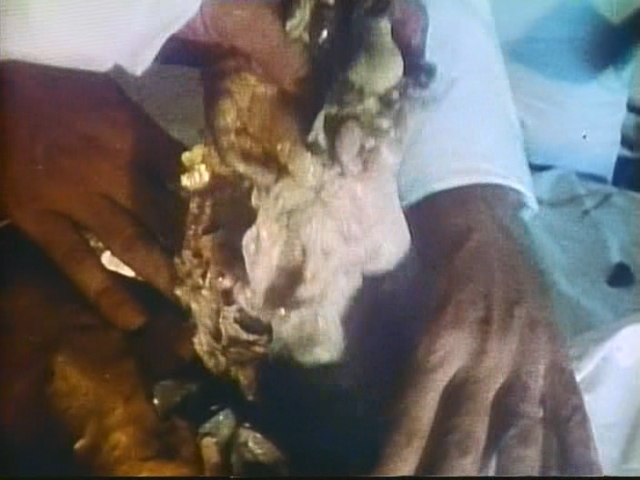
Milligan is also noted for the way his hand-held camerawork has a tendency to devolve into a kind of frenzy, at its most extreme obliterating visual coherence. This is the antithesis of the rather staid visual approach in Wood’s films, where the camera generally keeps its distance from the actors, framing them in medium shots which situate them within frequently under-dressed sets, trying to create an impression of a conventional movie world. The world of Milligan’s movies is more self-contained and conceptual.
The Man With Two Heads, the last of five features Milligan made in London in the early ’70s, is his version of The Strange Case of Dr. Jekyll and Mr. Hyde. Robert Louis Stevenson’s original story is surprisingly perverse; it posits that beneath the veneer of human civilization, Man is a primitive, brutish animal. Jekyll discovers a chemical concoction which strips away the social controls which make society possible, transforming himself into the violent, sexually uninhibited Hyde. Once released, this dark side exerts ever increasing control and, unable to restore himself to his former civilized state, Jekyll commits suicide.
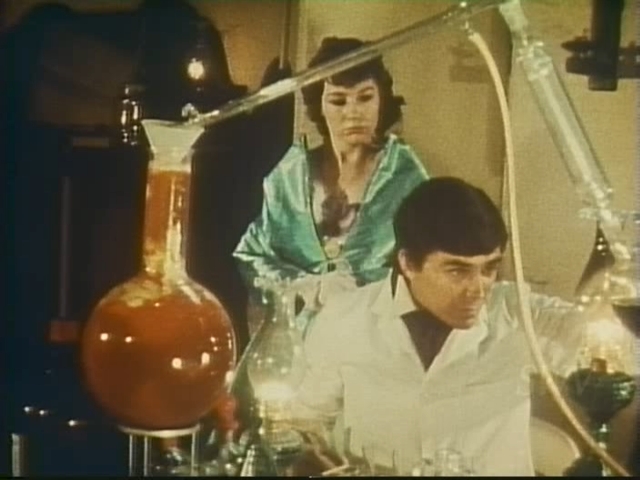
The appeal of the story to filmmakers has always lain in the excuse it provides to display scenes of depravity and violence while using a gloss of morality to justify what the censors would usually object to – traditionally the story is finally excused with the “there are some things Man is not meant to know/interfere with” moral (just like Frankenstein) which supposedly leaves the audience with the uplifting idea that all the preceding nastiness has been presented as an object lesson in how not to behave.
In Milligan’s retelling, Jekyll (Denis DeMarne) is not seeking to release Man’s dark side, but rather to excise it, to make it possible through medical chemistry to eliminate evil and make everyone completely good. He expounds on this theory at length to his select group of six medical students, only one of whom walks out in disgust. But having proved that he has the chemical means to isolate evil in the brain, Jekyll is faced with that age-old problem of the mad scientist: where do I get a human subject to try this on? And adhering to the time-honoured tradition, he naturally decides to try it on himself.
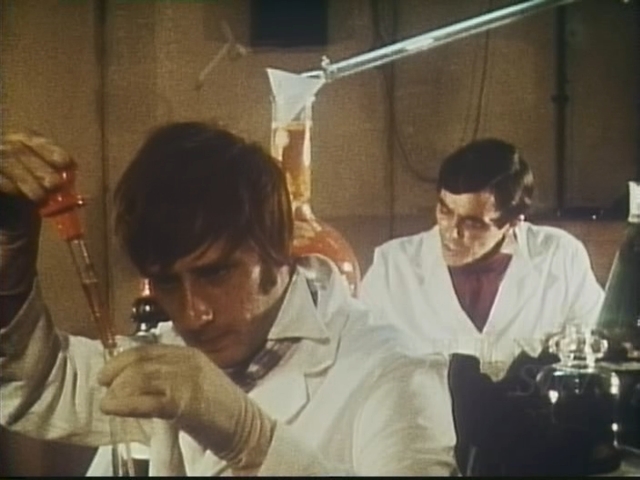
But in one of those unfortunate turns (like Igor dropping the genius brain in Young Frankenstein and replacing it with Abbie Normal’s brain), Jekyll’s assistant Jack Smithers (Berwick Kaler, who appeared in all five of the English features) accidentally spills something on the notebook containing the formula, smearing some of the figures; and like any good assistant, he grabs a pen and tries to repair the damage by writing over the smears what he hopes are the correct numbers. And just as inevitably, he gets it wrong. He begins to tell Jekyll, but then decides it’s better to keep quiet. The results are tragic as the good doctor, instead of eliminating the evil embedded in his brain, rather unleashes it, becoming the vicious, debauched Hyde.
DeMarne actually gives a fine dual-performance as the self-divided character, without the need to be coy for the sake of mainstream movie propriety. His Hyde is an intensely sadistic bastard who gains pleasure from brutalizing April Conners (Julia Stratton), a singer-cum-prostitute. Citing De Sade, he treats her like an animal and beats her savagely; but even this isn’t enough to satisfy him and eventually he commits a Jack the Ripper-like murder. As in Stevenson’s story, Jekyll increasingly cedes control to Hyde, until the former all but disappears.
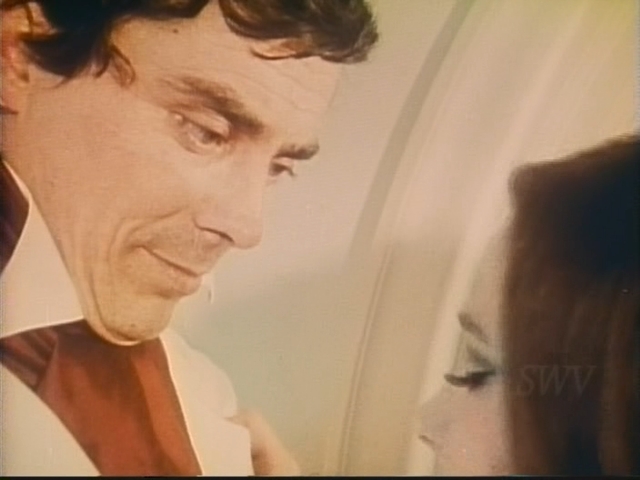
What makes Milligan’s version distinctive is that his Jekyll, a passionately committed doctor and researcher, is already a tainted character. Throwing himself into his work, he neglects his fiancee Mary Anne Marsden (Gay Field), despite the best efforts of his sister/housekeeper Carla (Jaqueline Lawrence) to nudge him towards the middle class respectability of a well-made marriage. In fact, it becomes clear that Jekyll uses his work as a way to avoid a normal heterosexual relationship. His behaviour as Hyde is revealed as an uninhibited expression of his own disgust at the idea of a sexual relationship with a woman … by extension pointing towards something which is implicit in the original story and its various movie versions; the streak of violent misogyny underlying expressions of overtly masculine sexuality. The Man With Two Heads openly expounds Milligan’s dark view of male human nature.
This may be yet another reason for many people’s dislike of his work; whatever its other qualities, it’s a bit too grim to be taken as disposable entertainment. It leaves a sour taste. Milligan had a genuine talent for filmmaking, but the ends to which he used it are discomfiting.
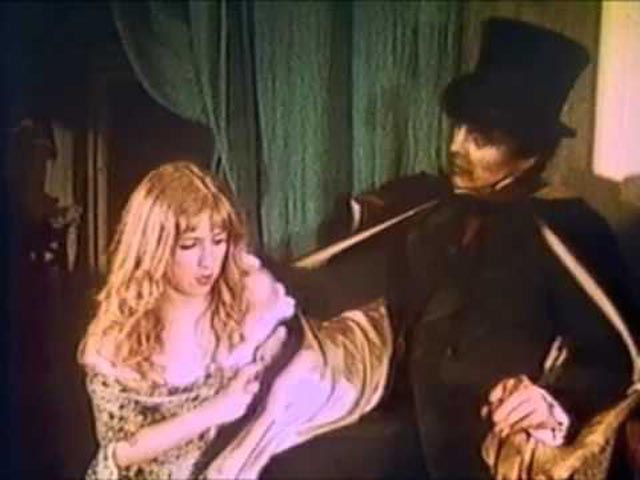
Unfortunately for my and Steve’s viewing of the film, the DVD-r from Something Weird Video is of pretty wretched quality. The disk was obviously made from an old VHS copy, which itself was made from a faded and battered print. The picture is blurry, with those moments of chaotic camera movement and rapid editing rendered all but unintelligible. On top of which, throughout the movie that infuriating SWV bug is prominently visible in the lower right of the frame. As is apparent from the BFI’s Milligan Blu-ray, he was actually a very capable and inventive cinematographer, so this particular disk fails to represent the true quality of his work.
On the other hand, without a beat, the closing scene of the movie segues straight to a half hour of Something Weird promos and trailers which in itself is very entertaining.
*
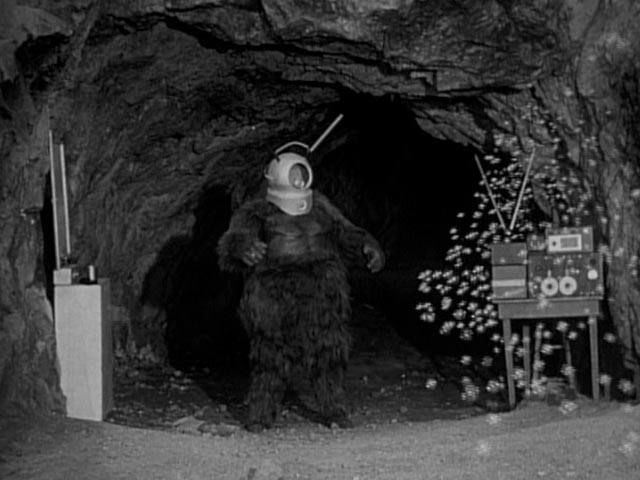
As a postcript, I might mention that I just received a copy of a 700-page book about the making of Robot Monster, the infamous 3D cheapie written and directed by Phil Tucker in 1953. How, you might well ask, could someone write that much about an incredibly cheap B-movie most famous for embodying its title character in a gorilla wearing a diving helmet, whose world-destroying weapon is a large bubble-making machine? Good question. I’ll find out when I have time to read Anders Runestad’s I Cannot, Yet I Must: The True Story of the Best Bad Monster Movie of All Time (Radiosonde Books, 2015), which as an added bonus includes a copy of the complete shooting script.
Comments
I enjoyed both those movies. The pizza was good, too. The chocolate dessert was a bit much. The Something Weird trailer reel was great. So much stuff to watch, so little time!
Sorry about the dessert. I should have provided pickled octopus instead, in honour of Ed Wood!